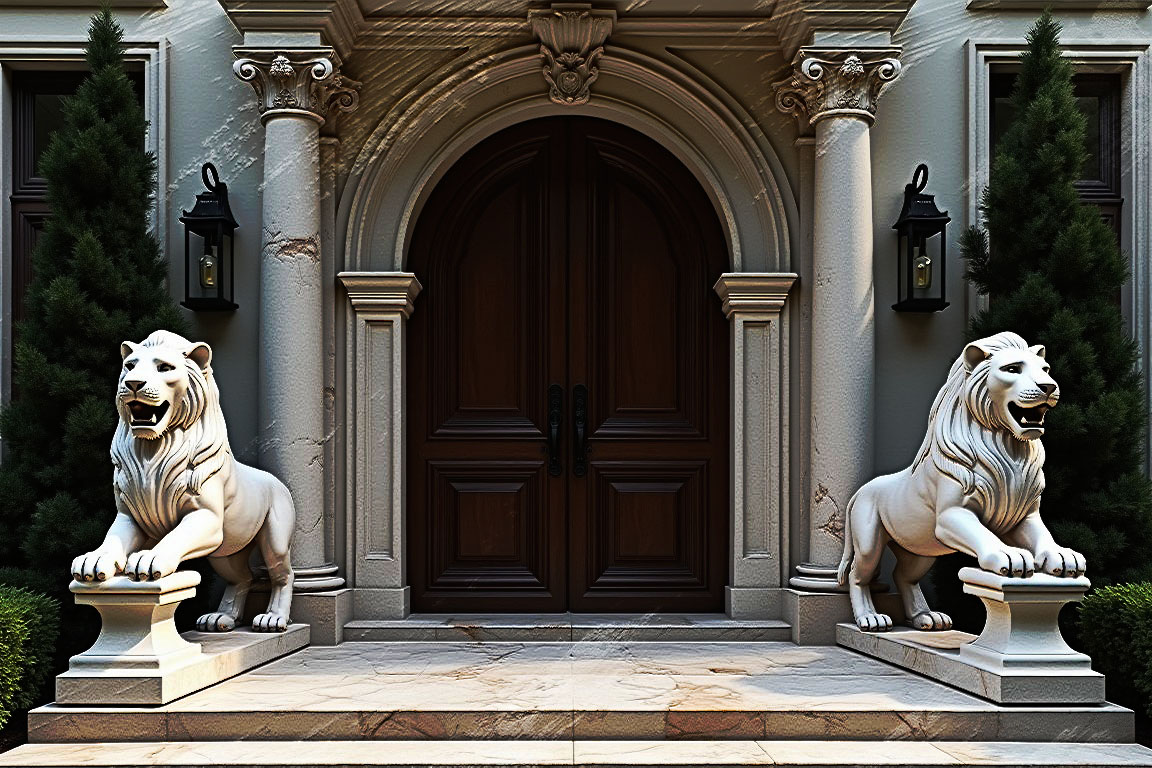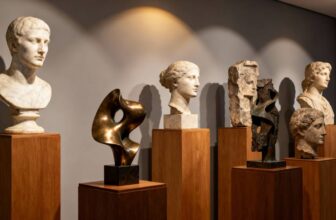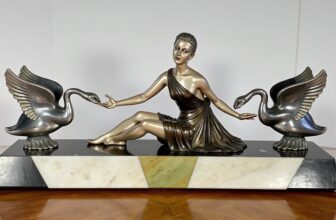
The Lion Pair Entrance Sculptures and Their Meaning
On a calm cobblestone street in Tuscany, where centuries-old villas still stand tall with weathered charm and olive groves sway gently in the wind, there’s a particular home that draws the eyes of every passerby. Not because of its age or architecture, but because of the magnificent pair of lion statues flanking the entrance. Majestic, fierce, noble, these stone guardians are more than decoration. They are symbols of protection, pride, strength, and legacy.
But why do so many Italians, and people around the world, place lions at the gates of their homes? What do they truly symbolize? And is there more to these sculptures than meets the eye?
Let’s step into the story behind the lion pair entrance sculptures, a tale of history, symbolism, art, and culture.
A Roaring Tradition: The Italian Lion Legacy
Italy is a country where architecture tells stories, and symbols breathe with meaning. From the regal palaces of Venice to the rustic homes in rural Umbria, lions are everywhere. On fountains, coats of arms, city gates, cathedrals, and especially at the entrances of homes and villas.
The tradition of placing lion statues at the entryway dates back to ancient Rome and even earlier, to the Etruscans. In Roman times, lions symbolized power and authority. The emperor’s might was often portrayed through imagery of lions, strong, fearsome, impossible to ignore. Lions were used in mosaics, frescoes, and sculptures throughout villas, palaces, and public spaces.
But during the Italian Renaissance, the lion took on an even deeper role. No longer just a symbol of might, it became a guardian, a spiritual protector of the home. Influenced by Greek mythology, Christian symbolism, and Eastern traditions brought back through trade and conquest, lions became gatekeepers between the physical and spiritual realms.
Hence, Italians began placing a pair of lion statues at the entrance of their homes to stand watch, ward off evil, and invite prosperity.
What Do Lion Statues in Front of a House Mean?
Lion statues, particularly when presented in pairs, carry a range of meanings that have evolved across cultures and generations. Here are the core symbolic messages:
1. Protection and Guardianship
Lions represent guardianship. In nearly every culture that uses lion statues, their role is clear: they protect. Positioned at the entrance, they serve as spiritual sentinels, watching over the house and warding off harmful spirits, energies, and intentions.
This belief is particularly strong in Feng Shui, where lion statues, called Fu Lions or Fu Dogs, are placed at entrances to protect from negative Chi. While this is a Chinese tradition, it parallels the Italian use of lions as protective icons.
2. Power and Strength
The lion is the king of beasts. A house flanked by lions communicates power, status, and strength, both to visitors and to the residents themselves. It’s a visual statement that says: This home is strong. This family is proud.
In Roman and medieval European traditions, lions symbolized aristocracy and nobility. Many noble families bore the lion on their coat of arms.
3. Courage and Nobility
Lions don’t just represent raw strength, they also symbolize courage, dignity, and nobility. A lion doesn’t need to roar to be respected. Its mere presence inspires awe. For homeowners, this can serve as a symbolic aspiration: to live with dignity, bravery, and grace.
4. Balance and Harmony
When a pair of lions is placed symmetrically, one on each side of a doorway, it creates a powerful sense of balance. This symmetry is believed to bring harmony and order to the home, both physically and energetically.
The Iconic Duo: What Are the Names of the Two Lion Statues?
In the tradition of Chinese guardian lions, which have strongly influenced the global use of lion statues, the pair is typically composed of a male and a female lion. This distinction has become common even in Western interpretations.
While they don’t have formal names in most Italian contexts, they are often recognized by their roles:
The Male Lion: Usually placed on the right side (when facing the building), he has one paw resting on a ball. The ball symbolizes earthly power and dominion, his role is to protect the physical structure and the outer world of the family.
The Female Lion: Positioned on the left side, she is shown with a paw gently resting on a cub. This represents nurturing, family, and protection of the interior space, symbolizing the home and those who dwell within.
Together, this pair embodies the Yin and Yang, strength and compassion, protection of the outside and the inside, the material and the emotional.
Which Way Should Lion Statues Face?
One of the most commonly asked questions about lion statues is: Which way should they face?
The answer is clear: Outward.
Lion statues should always face away from the house, looking outward toward the street or the main path. This positioning allows them to act as sentries, scanning for danger and keeping negative energies at bay.
Placing them to face inward is considered bad luck or energetically ineffective in many cultures, as it turns their protective power away from their intended purpose.
Where to Put a Lion Statue in a Home?
While traditionally placed outside the home, flanking the main entrance, there are a few other places where lion statues can be both meaningful and stylish:
Front Porch or Steps: Classic placement. One lion on each side of the entrance, slightly elevated, provides a commanding and balanced visual.
Entryway or Foyer (Indoors): Smaller lion statues can be placed just inside the home’s entrance, offering protection from within.
Garden or Courtyard: Especially in Italian villas and Mediterranean homes, lions often appear guarding garden paths or fountains.
Hallway or Fireplace Mantel: For decorative purposes, indoor lions can add a regal touch. However, to retain symbolic strength, their orientation and pair symmetry should be maintained.
What Do Two Lion Sculptures Symbolize?
The symbolism of two lion sculptures together is powerful because it speaks to duality, balance, and wholeness.
Masculine and Feminine Energies: The male and female lions represent the balanced forces of life. In this way, the pair symbolizes completeness, a full protection of both the external and internal aspects of the home.
Unity and Partnership: For couples or families, two lions can symbolize the partnership at the heart of the household, the unity and shared guardianship of those who live there.
Past and Future: In symbolic terms, one lion can be seen as guarding the past and the other the future, ensuring that the legacy of the home is preserved while opening the path forward.
Why Do People Put Lions in Front of Their House?
At the most personal level, people put lions in front of their homes for three key reasons:
1. To Feel Protected
Even if one doesn’t actively subscribe to spiritual beliefs, there’s something emotionally comforting about having strong, noble figures watching over your space. They represent a kind of psychological armor, a statement of vigilance and strength.
2. To Express Identity
Lions, as symbols, carry immense cultural and personal weight. They may represent family heritage (particularly in European and Asian traditions), personal values (like courage or leadership), or even aesthetic taste. For many, it’s about creating a home that feels as powerful as it looks.
3. To Enhance Prestige
Let’s face it, lion statues look impressive. Especially in stone, marble, or bronze, they add an air of grandeur and historical significance to a property. Even a modest home can gain an elevated appearance with the right pair of lions.
A Tale of Two Lions: A Short Vignette
Let’s return to that house in Tuscany.
Giovanni, the grandson of a stonemason, inherited the villa from his grandfather. At the front gate stand two worn but majestic lions, carved by his grandfather’s own hands in the summer of 1923. Over the years, moss has gathered at their paws, and the weather has softened their lines, but they still stand strong.
Locals say they’ve always protected the family, from war, from economic hardships, from the loss that touches every generation.
Giovanni often places a small offering of rosemary and lavender at their feet, whispering a blessing before he enters the home. To him, they are not just statues. They are sentinels of memory, carved love, and unseen strength.
And in the quiet moments of dusk, when the olive trees sway and the bells chime in the distance, the lions seem almost alive.
Choosing Your Own Lions
If you’re considering adding lion sculptures to your own home, here are a few practical tips:
Material Matters: Stone or concrete lions offer a timeless look, while bronze or metal adds a more modern or regal feel.
Size and Proportion: Make sure the size fits your entryway. Oversized lions can overpower a small space; too small, and they lose their presence.
Position Symmetry: Place them evenly on either side of your entrance, ideally on pedestals or steps for elevation.
Face Them Outward: Always have them face the street or the direction from which guests (or energies) arrive.
Honor Their Meaning: Whether for spiritual, cultural, or aesthetic reasons, let the lions stand for something meaningful to you.
The Enduring Power of the Lion Pair
The lion has roared through history not just in the savannas but in our stories, art, and homes. Whether standing tall at the gates of Venetian palazzos or guarding suburban doorways in America, the lion pair sculpture reminds us of something deeply human, the desire to protect, to stand proud, and to create homes that embody strength, dignity, and heart.
So the next time you pass a pair of lions at someone’s front door, look a little closer. They might not just be statues.
They might be watching, waiting, and guarding the story within.




